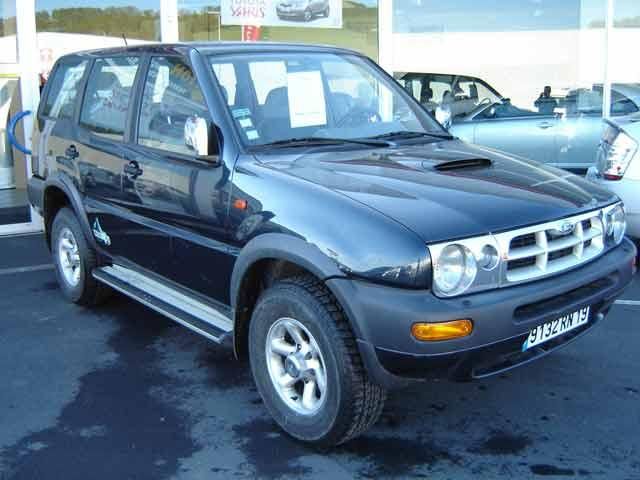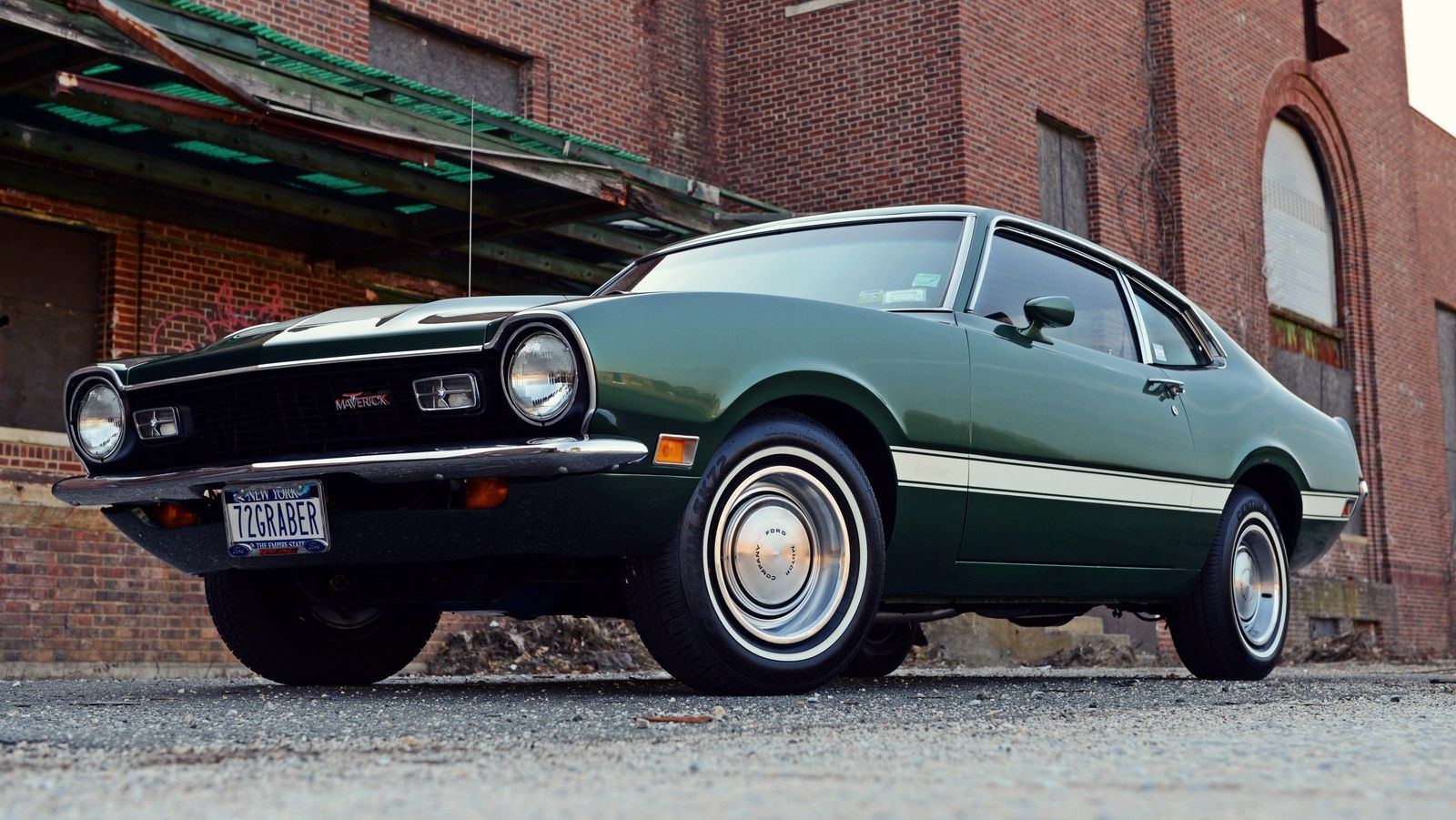Ford Motor Company has used the Maverick name on four completely different automobiles in the last three decades. The Maverick is best known in North America as a sport-styled compact car in the 1970s. The name has also been used by Ford for three different SUVs in Australia and Europe.
2006 Ford Maverick
- Make: Array
- Model: 2006 Ford Maverick
- Segment: Array
- Engine/Motor: 2.5L V6
- Horsepower: 204@6400
- Torque: 185@4800
- Transmission: 6 Speed Manual
- [do not use] Vehicle Model: Array
North American history
The first Ford Maverick was a rear wheel drive compact car that was built from 1970 to 1977 in the USA, Canada, Mexico, and from 1973 to 1979 in Brazil. The original model was a 2-door sedan priced at USD$1,995.
The Ford Maverick was styled with a long hood, fastback roof, and short deck. It was released exactly five years after the original long hood, short deck Ford Mustang. According to several Ford insiders, the Maverick was originally slated to be either a full Mustang replacement or the newest restyling of the Mustang. Rumor had it there was actual European design studio input regarding this body style. The 2-door had what some would call “Italian” lines in its design. The Maverick caused perhaps the first rumors regarding the end of the Mustang, rumors which would crop up repeatedly in later years, even coming to fruition during the development of the Ford Probe.
Internal and external resistance to a "Mustang replacement" meant that the Maverick would actually be replacing the Ford Falcon. The Falcon's sales had already been decimated by the introduction of the Mustang in 1964, and despite a redesign in 1966, the Falcon was left without a place in the Ford lineup. The Falcon was discontinued early in the 1970 model year after a few thousand units were produced as basically warmed over 1969 models, but the Falcon name was used on stripped down versions of the mid-sized Ford Torino during the second half of the 1970 model run.
The Maverick was a huge sales success. Nearly 579,000 units were produced in its first year. This rivaled the record-setting first year of Mustang sales (nearly 619,000), and easily outpaced the Mustang's sales of less than 200,000 in 1970.
Trim packages and variants
The Maverick had several different models. Initially, only the standard coupe was available. Early models lacked a true glove box to save on costs, but the glove box was added in 1973. A four-door sedan was introduced in 1971 and was also well received despite lacking the distinctive fastback of the coupe, as it had significantly more room in the back seat. A rare station wagon version of the Maverick was introduced in Brazil in 1975.
In the first year of production, the coupe had only two available engine options, a 170 cid I6 and a 200 cid I6. Commercials compared it to the smaller Volkswagen Beetle for $1,995, even though the somewhat similarly-styled Ford Pinto would later be Ford's real subcompact entry.
The four-door model was introduced in 1971. Also available was a 250 cid I6 and a vinyl roof. Mercury also revived the Mercury Comet as a mechanical clone of the Maverick. A 210-horsepower 302 cid V8 was also introduced for both the Comet and the Maverick. The Comet featured a new grille, taillights, trim, and hood.
The muscle car-themed Grabber trim package was introduced in mid-1970. The package included special graphics and trim, including a spoiler. It was offered from 1970-1975. In 1971 and 1972, the Grabber came with a special "Dual Dome" hood. A similar package for the Mercury Comet, the Comet GT, was also offered from 1971-1975 and had "muscle car" trim akin to the Maverick Grabber, plus its own distinctive hood scoop.
A Sprint package was offered in 1972. The Sprint had a special red, white, and blue paint job with a matching interior. Similar packages were offered on the Pinto and the Mustang. A new "Luxury Decor Option" trim level was introduced late in the 1972 model year that included reclining bucket seats in a soft vinyl material, plush carpeting, woodgrained instrument panel trim, radial tires with deluxe wheel covers and a vinyl roof. The Maverick LDO option (also offered on the Mercury Comet) was one of the first American compacts to be marketed as an lower-priced (and domestic) alternative to the more expensive European luxury/touring sedans from Mercedes-Benz, BMW, Audi and other makes.
Minor changes were made from 1973-1975. In 1973, the 170 cid engine was dropped, making the 200 cid I6 the standard engine. Additionally, improved brakes and a previously optional chrome grille became standard. An AM/FM stereo, aluminum wheels and a new front bumper were added (the latter to comply with new federal regulations). In 1974, the Maverick was unchanged except for rear federal bumpers and larger trunk with a higher deck. Jumping gas prices and increasing demand for smaller cars resulting from the Arab Oil embargo did cause the Maverick to grow in popularity, selling 10,000 more units than the year before. Production of the Maverick and Comet dropped in 1975 with the release of the Ford Granada and Mercury Monarchas true Euro-style luxury compacts. The Maverick received minor trim changes for 1975 that included new grilles and the replacement of Maverick nameplates on the hood and trunklid with FORD nameplates spelled out in block letters.
In 1976 the Grabber was dropped, and a Stallion package was introduced. The Stallion option came with special paint and trim. Like the Sprint package four years earlier, Ford offered the Stallion option on several models, this time including the Pinto and the new Mustang II. The Comet GT was also discontinued. Standard Mavericks received another new grille and gained front disc brakes as standard equipment along with a new foot-operated parking brake that replaced the old under-dash T-handle unit. Production continued to drop.
1977 was the final year for both the Maverick and Comet. Both cars remained unchanged except for a police package on the Maverick which was not sufficiently upgraded for police work and sold less than 400 units. The Maverick was produced in Brazil until 1979.
The Maverick and Comet saw no significant changes towards the end of their lifespan since they were originally meant to be replaced in 1975 by the Granada and Monarch. However, Ford decided to keep selling both sets of cars until the 1978 model year introduction of the Ford Fairmont and Mercury Zephyr, which were built on an all-new "Fox" platform that would serve as the basic platform for many Ford/Mercury/Lincoln designs through the mid-1980s.
Legacy

The Maverick inspired other fastback or semi-fastback compacts, most notably the Plymouth Duster which grafted a curvaceous rear to the front of the boxy Plymouth Valiant. The Plymouth Volaré/Dodge Dart, Chevrolet Nova and even the AMC Hornet would also adopt fastback rooflines in the 1970s.
Despite being one of Ford Motor Company's most successful cars, the Maverick/Comet has not reached the popularity of the Nova, and is still overlooked by most classic car enthusiasts. As they grow in age and rarity, the cars have been making a resurgence in popularity as can be seen on websites such as the Maverick/Comet Forums. The Maverick was produced in toy form as the Hot Wheels "Mighty Maverick" and a Mini Lindy model. In general, Maverick models and toys are few and far between, but in 2006, WalMart carried a new die cast line of small Fords including the Maverick.
Australian SUV
The Ford Maverick name was later used on an SUV in Australia based on the Nissan Patrol GR and sold between 1988 and 1998.
European SUV
A completely different Maverick was sold under the same name in Europe. It was a rebadged version of the Nissan Terrano II and had no Ford parts except for the badge. It was built at Nissan Motor España from 1993 to 2001.
From 2001 to 2004 the Ford Escape was sold in Europe under the Maverick name. Only two versions were made, the 2.0 L Zetec engine with manual transmission and 3.0 L Duratec with automatic transmission, both using gasoline as fuel. The absence of a diesel version did not help sales and production halted in late 2003.
The Maverick was primarily designed for on-road use - sold with normal road tires, and to be used with front-wheel drive most of the time. A switch on the dashboard enabled four-wheel drive mode with full differential lock - this precluded using full-time four-wheel drive on the road as it caused undue wear on the transmission and tires.




